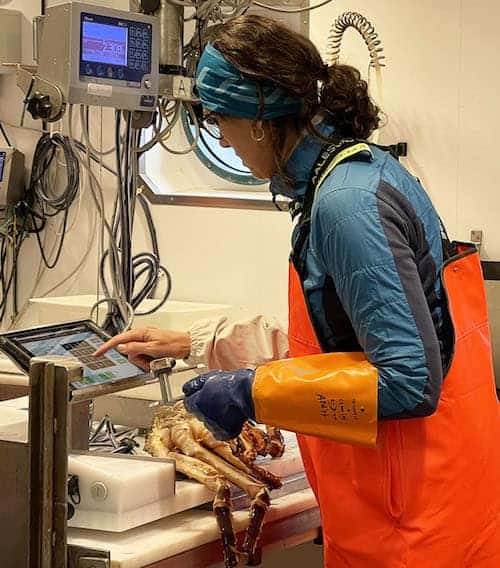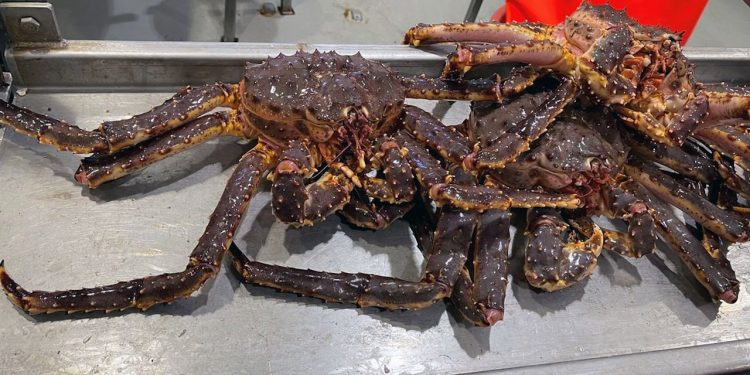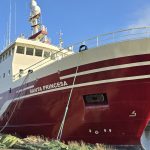Based on the outcome of this year’s king crab survey, scientists at Norway’s Institute of Marine Research (HI) are recommending a hefty cut in the 2024 king crab quota to not more than 966 tonnes, as the survey results indicate a significant decline in the population.
This means a substantial reduction compared to the quota advice for 2023, which was 2375 tonnes.
‘The result from this year’s survey shows a significant decrease in the number of crabs above the minimum target size for fisheries. The fact that we are now seeing a decline in the stock is, of course, bad news for the fishermen,’ said HI population manager for king crab, Carsten Hvingel.
‘The quota in the next few years will most likely be between 800 and 1,700 tonnes per year, if long-term fishing is to be maintained.’

King crab is a non-native species that was introduced to Norwegian waters and there’s a twofold management objective for this species. In Eastern Finnmark, the goal is to maintain a long-term commercial fishery through quota regulation, while in the areas west of North Cape, the aim is to keep the crab population as low as possible through a free fishery.
‘The management target for king crab dictates that it must be fished relatively hard to reduce its spread outside the quota-regulated area in Eastern Finnmark. That the stock should be as low as possible has therefore been the premise of the king crab advisory since 2008. This naturally means that the catch level must also be reduced in the future,’ Carsten Hvingel explained.
Outside the quota-regulated area, free fishing for king crab is still recommended to reduce spread and keep the density of crab as low as possible.
This year’s king crab survey in the quota-regulated area was carried out this year in the period 4–28th September. Fjords and open sea areas were surveyed using trawls, seines and video sledges, which are used for direct counting of crabs on the seabed.
‘This year, as last year, there was a ban on catching king crab during the survey period. This ensured us both good coverage and completion of the survey. The result from this year’s trip shows a decrease in the number of catchable crabs in line with the management goals for the stock,’ he said.
The Institute also recommends that the conservation period, which currently only comprises the month of April, be extended. Carsten Hvingel commented that after the shell change, the meat contents increases, and is at its best in autumn and winter.
‘Fishing during this period therefore gives the best financial return. This is one of the reasons why the conservation period in other king crab fisheries is usually from February to October,’ he said, adding that researchers also observed that the proportion of injured crabs, missing bones or claws, has increased recently.
‘An extended conservation period will probably be able to help with this. In addition, we also recommend that consideration be given to whether the quota share of damaged crab is increased. The share of damaged crab in the catchable stock has varied between 15 and 30% in the last five years.’









